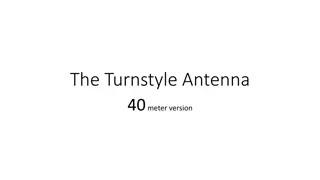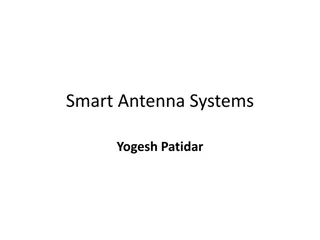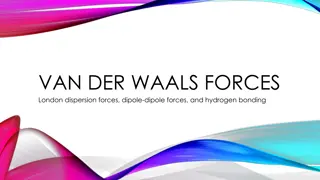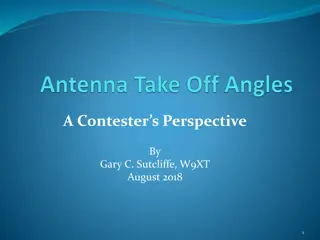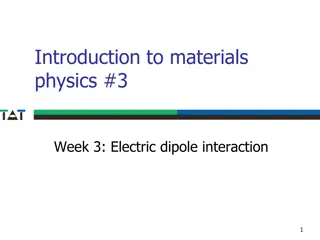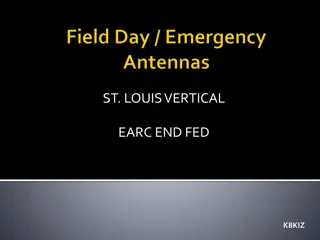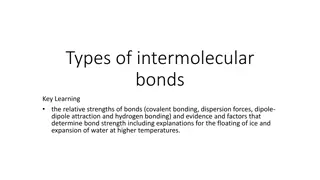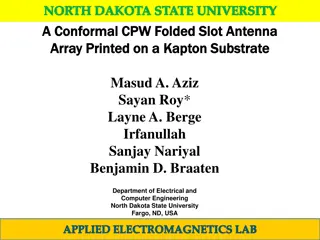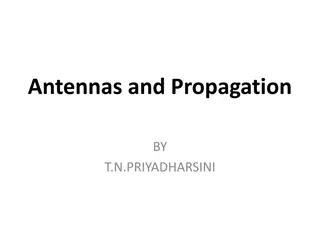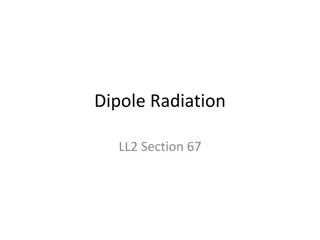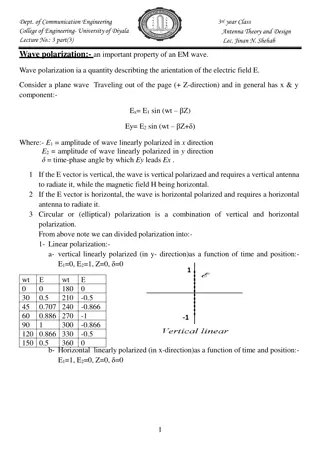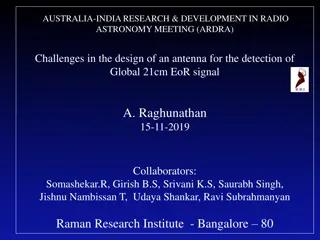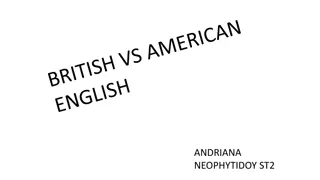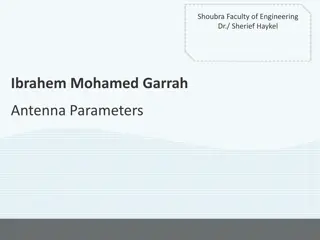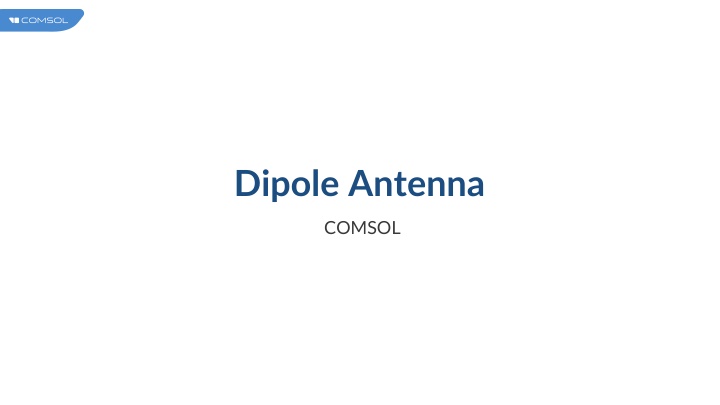
Understanding Dipole Antennas and Their Radiation Patterns
Explore the dipole antenna configuration, its design principles, and radiation patterns. See how a model of a dipole antenna is defined and the results of the simulation, including electric and magnetic field magnitudes and far-field radiation patterns. Gain insights into the behavior of dipole antennas in free space and their isotropic radiation characteristics.
Download Presentation

Please find below an Image/Link to download the presentation.
The content on the website is provided AS IS for your information and personal use only. It may not be sold, licensed, or shared on other websites without obtaining consent from the author. If you encounter any issues during the download, it is possible that the publisher has removed the file from their server.
You are allowed to download the files provided on this website for personal or commercial use, subject to the condition that they are used lawfully. All files are the property of their respective owners.
The content on the website is provided AS IS for your information and personal use only. It may not be sold, licensed, or shared on other websites without obtaining consent from the author.
E N D
Presentation Transcript
Dipole Antenna COMSOL
Introduction The dipole antenna is one of the most straightforward antenna configurations It can be realized with two thin metallic rods that have a sinusoidal voltage difference applied between them The length of the rods is chosen such that they are quarter wavelength elements at the operating frequency Such an antenna has a well-known torus-like radiation pattern
Model Definition The model of the antenna consists of two cylinders representing each of the dipole arms The free space wavelength at the antenna s operating frequency is 4 m Thus, each of the antenna arms is 1 m long and aligned with the z- axis A dipole antenna. The model consists of two cylindrical arms of conductive material with a voltage source in between. A region of free space bounded by a perfectly matched layer (PML) surrounds the antenna
Model Definition The arm radius is chosen to be 0.05 m In the limit as the radius approaches zero, this antenna approaches the analytic solution for a thin linear half wave dipole antenna A small cylindrical gap of size 0.01 m between the antenna arms represents the voltage source A dipole antenna. The model consists of two cylindrical arms of conductive material with a voltage source in between. A region of free space bounded by a perfectly matched layer (PML) surrounds the antenna
Results The figure shows the magnitude of the electric field around the antenna The fields appear artificially high near the excitation, as well as at the ends of the arms A slice plot of the electric and magnetic field magnitude around the antenna
Results These peaks in the intensity are due to local singularities; the fields at sharp transitions in the model are locally artificially high, but they do not affect the results some distance (1~2 elements) away from these regions A slice plot of the electric and magnetic field magnitude around the antenna
Results The polar plot in the figure of the far-field pattern in the xy-plane shows the expected isotropic radiation pattern The polar plot of the far field pattern in the xy-plane is isotropic
Results The 3D visualization of the far- field intensity in the figure shows the expected torus-shaped pattern A 3D visualization of the far-field pattern of the dipole shows the expected torus-shaped pattern
Results The real part of the impedance as seen by the port is evaluated to be about 120 , which agrees reasonably with expectations With further tuning of the antenna length, radius, and gap height to have the resonance at which the reactance is zero, the result approaches the well known value for a half-wave (0.48 0) dipole antenna, which is 73


